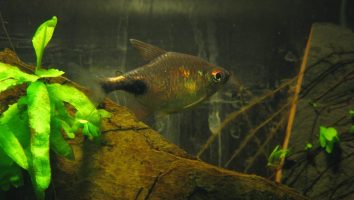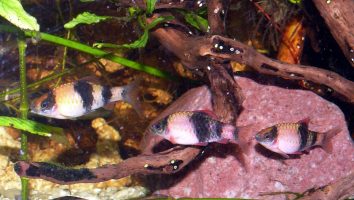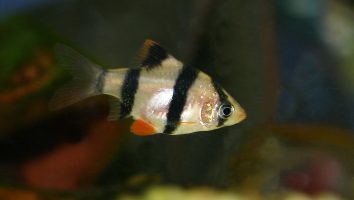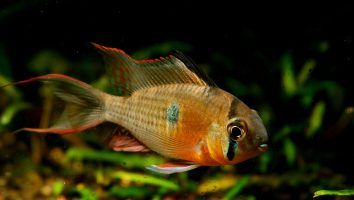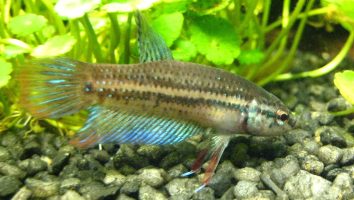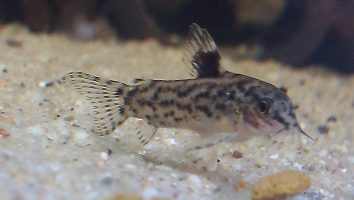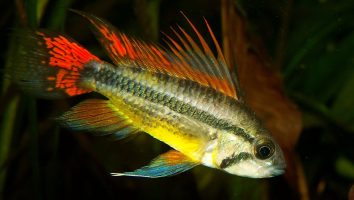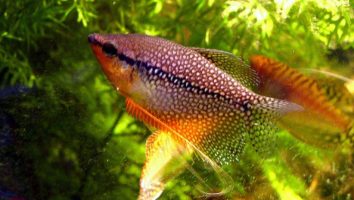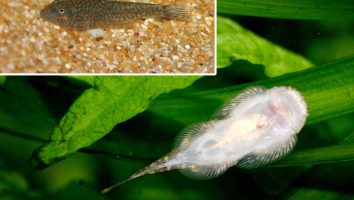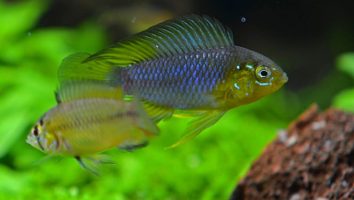The silver dollar is a freshwater fish that is popular in the aquarium trade. They are a peaceful species that is easy to care for.
Despite their name, silver dollars are not actually related to the dollar fish. Their name comes from their large, round shape.
Silver dollars are a popular choice for aquarists because they are relatively easy to care for and are peaceful tank mates.
This guide will teach you everything you need to know about silver dollar care. You’ll learn about their diet, size, lifespan, and more!
Table of contents
Species overview
The silver dollar (scientific name: Metynnis argenteus) is a freshwater fish that’s native to South America. They are most commonly found in the Orinoco and Amazon River basins.
Silver dollars are a popular choice for aquariums because of their beautiful iridescent scales. They are also relatively easy to care for and are compatible with a wide variety of tank mates.
One thing to keep in mind with silver dollars is that they are a schooling fish. This means that they should be kept in groups of at least six. If they are kept alone, they can become stressed and may stop eating.
Appearance
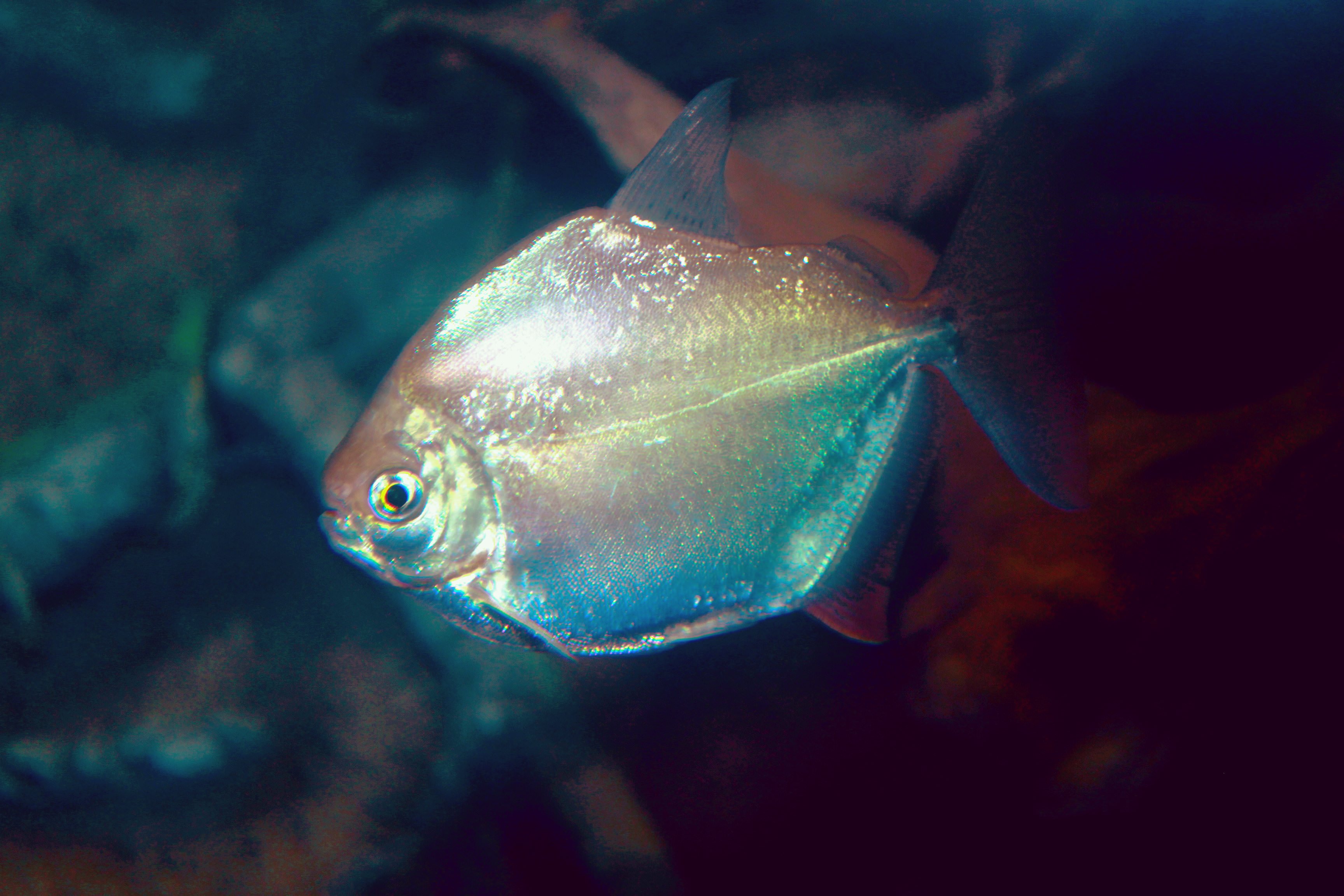
The first thing you’ll notice about the silver dollar is their large size. These fish can grow to be up to 12 inches long!
They have a very distinct disc-like shape that’s almost as wide as it is long. This shape gives them a very unique look that really stands out in a freshwater tank.
Their coloration is a beautiful silver color that has a metallic sheen to it. This color is broken up by a few darker vertical stripes that run along their sides.
The fins on a silver dollar fish are all fairly large. The dorsal and anal fins start about two-thirds of the way back on their bodies and extend back quite a bit.
Their caudal fin is forked and symmetrical on the top and bottom. The pectoral fins are large and rounded. You’ll also find a adipose fin right behind their dorsal fin.
Lifespan
The average lifespan of a silver dollar is 5 to 8 years.
Again, there are a number of factors that can impact this number. In the wild, these fish don’t usually live very long. This is due to predation, disease, and a lack of food.
In captivity, however, they can live much longer if they’re given the proper care. Things like a good diet, clean water, and appropriate tank mates can all help to extend their lifespan.
Size
A Silver dollar can grow to be up to 6 inches in length, but is typically closer to 4 or 5 inches when full grown. These fish are relatively small, so they don’t need a ton of space to swim around.
Tank
Tank Size
The recommended tank size for silver dollars is 30 gallons for a single fish, and an additional 10 gallons for each additional fish.
Silver dollars are a schooling fish, so it’s best to keep them in groups of at least 4 fish. If you have a smaller tank you might be able to get away with keeping a smaller school, but we wouldn’t recommend it.
Water Parameters
Silver dollars are a tropical fish, so they prefer warm water with a neutral to slightly acidic pH. They also prefer soft water, although they can tolerate moderately hard water.
One of the most important things to remember when caring for silver dollars is to maintain consistent water parameters. These fish are very sensitive to changes in their environment, so even a small deviation can cause stress and health problems.
To help keep water parameters stable, it’s a good idea to use a water conditioner that removes chlorine and chloramine from the water. It’s also a good idea to do regular water changes and to keep a close eye on nitrate levels.
- Water temperature: 72 to 82 degrees Fahrenheit
- pH levels: 6.5 to 7.5
- Water hardness: 2 to 12 dGH
- Alkalinity Levels: 4-8 dKH
What To Put In Their Tank
Silver dollars are a schooling fish, which means they do best in groups. We recommend a minimum of six, but the more the better.
When it comes to setting up their tank, there are a few things you’ll need to take into consideration.
The first is that silver dollars are known to be jumpers. This means you need to have a secure lid on their aquarium.
The second is that these fish like to swim, A LOT. This means you need to have a tank that’s at least 50 gallons. If you can go bigger then do it, these fish will appreciate the extra space.
When it comes to decorations, you have a lot of options. Driftwood, rocks, and plants are all suitable. Just avoid anything that’s too sharp or pointy.
The substrate is up to you, but we recommend something on the softer side. These fish like to dig and play in the substrate, so something that’s easy on their fins is ideal.
Common Diseases
The silver dollar is a hardy fish that doesn’t get sick often. However, when they do get sick it’s usually because of one of two things: water quality or parasites.
The most common disease that silver dollars contract is ich. This is a parasites that manifests itself as white spots on the body of the fish. It’s not usually fatal, but it can be if it’s left untreated.
The other common disease is columnaris. This is an infection that affects the skin and fins of the fish. It’s also not usually fatal, but it can be if it’s left untreated.
The best way to prevent these diseases is to maintain the quality of the water in your tank. A tank with clean and stable water conditions is always going to be healthier for your fish.
You should also be sure to quarantine any new fish before adding them to your tank. This will help to prevent any diseases that they might be carrying from spreading to your other fish.
Behavior & Temperament
The silver dollar is a schooling fish, which means it does best when it’s in the company of others. In the wild, these fish travel in large groups. So, it’s best to keep them in schools of at least six in the aquarium.
When they’re not schooling, silver dollars tend to be relatively peaceful. They’ll often leave other fish alone and only interact with them when it’s time to eat.
Even though silver dollars are peaceful, they are known to be a bit nippy. They have a habit of nipping at the fins of other fish. This behavior is usually seen when they’re in a small tank and feeling cramped. It’s their way of telling the other fish to stay away from their territory.
Tank Mates
Silver dollars are a peaceful species that can get along with most fish. They’re not too large or aggressive, so they make good tank mates for a variety of species.
That said, there are a few things to consider when choosing silver dollar fish tank mates.
First, these fish come from warm South American waters. As a result, they prefer water on the warmer side. This is something to keep in mind when choosing fish that can tolerate similar conditions.
Secondly, silver dollars are schooling fish. They do best when kept in groups of their own kind. If you’re only planning on keeping a few, then it’s best to choose tank mates that don’t school.
Finally, silver dollars are vegetarians. They mainly eat plants and algae, so it’s best to avoid tank mates that are known to nibble on vegetation.
Some good silver dollar fish tank mates include:
- Neon Tetras
- Cardinal Tetras
- Guppies
- Mollies
- Platies
- Corydoras Catfish
*Swordtails
Breeding
Silver dollars are not the easiest fish to breed in captivity. They are Egg Scatterers, which means that the female will lay her eggs and the male will fertilize them. But, instead of guarding the eggs, they will just scatter them around the tank.
This makes it very difficult to get a high survival rate for the fry. If you’re up for the challenge, here’s what you need to do.
First, you need to set up a breeding tank. It should hold at least 50 gallons of water and have a lot of hiding places. Driftwood, caves, and live plants are all good options.
You will also need to create a well-oxygenated water column. The best way to do this is to use an air stone.
When the tank is set up, add two males for every female. This will help to increase the chances of fertilization.
The next step is to trigger spawning. The best way to do that is to do a large water change. This will simulate the rainy season and trigger spawning.
Once the eggs are laid, remove the adults from the tank. The eggs will hatch within a few days.
To increase the fry’s chances of survival, you need to keep the water quality high. Do regular water changes and feed them live food.
Conclusion
The silver dollar is a beautiful fish that is a great addition to any freshwater tank. They are peaceful and get along well with other community fish. They are also easy to care for, which is always a bonus.
The only downside to this fish is that they can get quite large, so make sure you have a tank that is big enough to accommodate them. Other than that, we think they’re a great choice for any fish owner.

